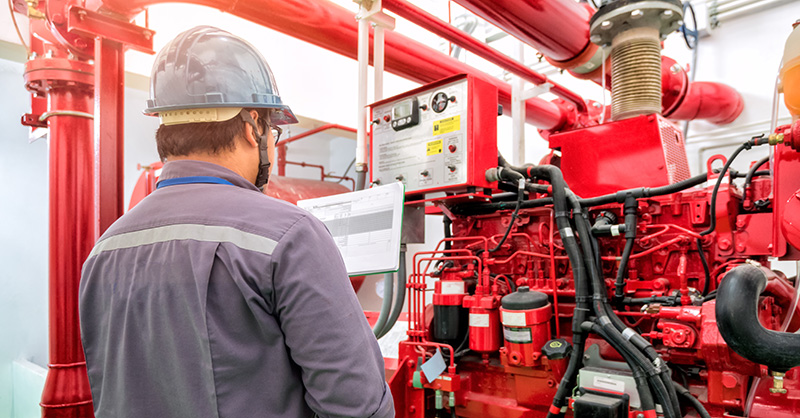Maintaining Fire Safety: The Importance of Fire Sprinkler System Maintenance

Fire sprinkler system maintenance is vital to protecting your property and reducing losses. In some cases, fire sprinkler systems are required by law, and organizations can be closed for non-compliance.
Why Sprinkler Maintenance Matters
A 2021 study by the National Fire Protection Association (NFPA) found that sprinkler systems operated effectively 88% of the time. However, this means they failed to control a fire 12% of the time. The number one reason a sprinkler system did not control a fire was because it failed to operate. A second reason is that it operated ineffectively (likely due to inadequate design or water supply).

Steps to Help Ensure Your Sprinkler System Operates When Needed
NFPA 25, Standard for the Inspection, Testing and Maintenance of Water-Based Fire Protection Systems, outlines the following program for sprinkler systems:
- Test sprinkler heads at various intervals depending upon their manufacture and use.
- Inspect control valves, signs and other accouterments monthly.
- Perform main drain tests at least annually for all sprinkler systems (quarterly if there is a backflow preventer in the supply line).
- Fully open and close all control valves when necessary.
- Test water flow alarm lines at least twice a year (four times a year if a mechanical device, such as a water motor gong, is present).
- Test or replace pressure gauges at five-year intervals, along with internal pipe inspections to look for problems hidden inside the piping.
Additional Steps for Dry Sprinkler Systems
- Test quick opening devices (if one is provided) quarterly.
- Perform dry valve trip tests annually, with a full flow trip test to measure the time it takes for the water to travel to the inspector’s test valve once every three years.
Following a regularly scheduled maintenance plan helps organizations lower the risk of failure by identifying faults in the system and finding damaged or worn equipment that needs to be replaced.









